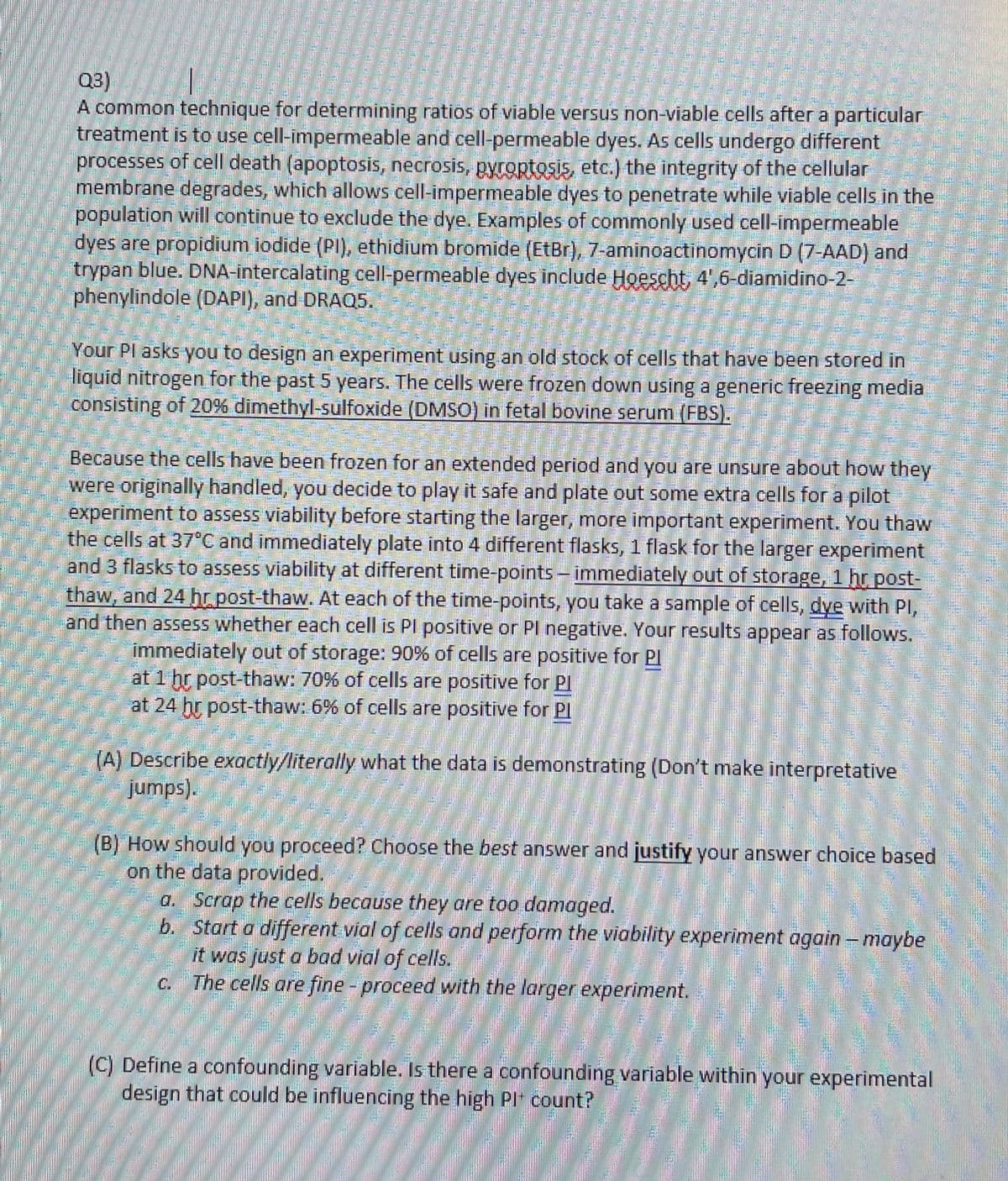Q3) A common technique for determining ratios of viable versus non-viable cells after a particular treatment is to use cell-impermeable and cell-permeable dyes. As cells undergo different processes of cell death (apoptosis, necrosis, pyroptosis, etc.) the integrity of the cellular membrane degrades, which allows cell-impermeable dyes to penetrate while viable cells in the population will continue to exclude the dye. Examples of commonly used cell-impermeable dyes are propidium iodide (PI), ethidium bromide (EtBr), 7-aminoactinomycin D (7-AAD) and trypan blue. DNA-intercalating cell-permeable dyes include Hoescht, 4',6-diamidino-2- phenylindole (DAPI), and DRAQ5. Your Pl asks you to design an experiment using an old stock of cells that have been stored in liquid nitrogen for the past 5 years. The cells were frozen down using a generic freezing media consisting of 20% dimethyl-sulfoxide (DMSO) in fetal bovine serum (FBS). Because the cells have been frozen for an extended period and you are unsure about how they were originally handled, you decide to play it safe and plate out some extra cells for a pilot experiment to assess viability before starting the larger, more important experiment. You thaw the cells at 37°C and immediately plate into 4 different flasks, 1 flask for the larger experiment and 3 flasks to assess viability at different time-points - immediately out of storage, 1 hr post- thaw, and 24 hr post-thaw. At each of the time-points, you take a sample of cells, dye with Pl, and then assess whether each cell is Pl positive or Pl negative. Your results appear as follows. immediately out of storage: 90% of cells are positive for Pl at 1 hr post-thaw: 70% of cells are positive for Pl at 24 hr post-thaw: 6% of cells are positive for Pl (A) Describe exactly/literally what the data is demonstrating (Don't make interpretative jumps). (B) How should you proceed? Choose the best answer and justify your answer choice based on the data provided. a. Scrap the cells because they are too damaged. b. Start a different vial of cells and perform the viability experiment again - maybe it was just a bad vial of cells. c. The cells are fine - proceed with the larger experiment. (C) Define a confounding variable. Is there a confounding variable within your experimental design that could be influencing the high Plt count? mis tu
Gene Interactions
When the expression of a single trait is influenced by two or more different non-allelic genes, it is termed as genetic interaction. According to Mendel's law of inheritance, each gene functions in its own way and does not depend on the function of another gene, i.e., a single gene controls each of seven characteristics considered, but the complex contribution of many different genes determine many traits of an organism.
Gene Expression
Gene expression is a process by which the instructions present in deoxyribonucleic acid (DNA) are converted into useful molecules such as proteins, and functional messenger ribonucleic (mRNA) molecules in the case of non-protein-coding genes.

Trending now
This is a popular solution!
Step by step
Solved in 5 steps






